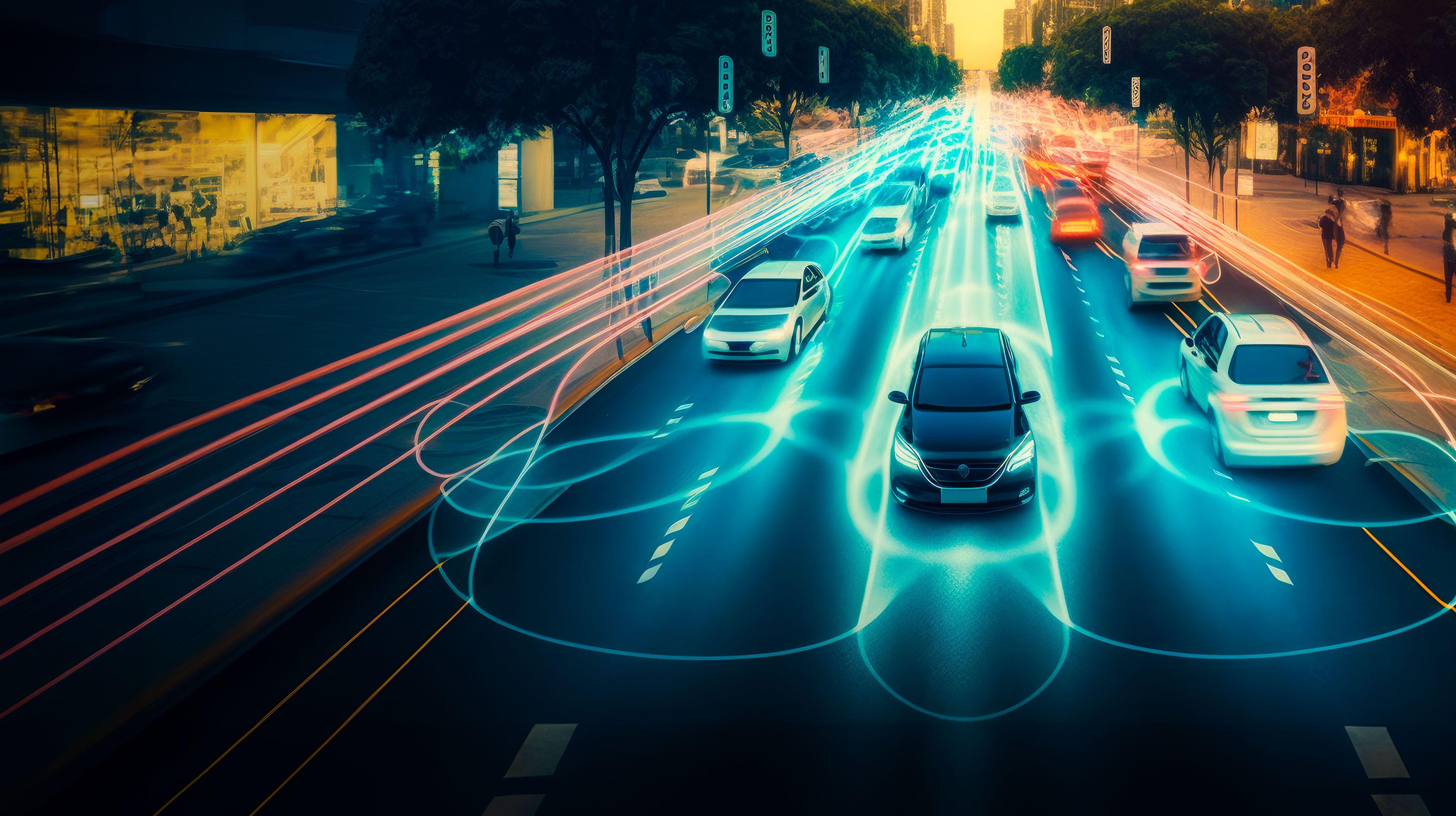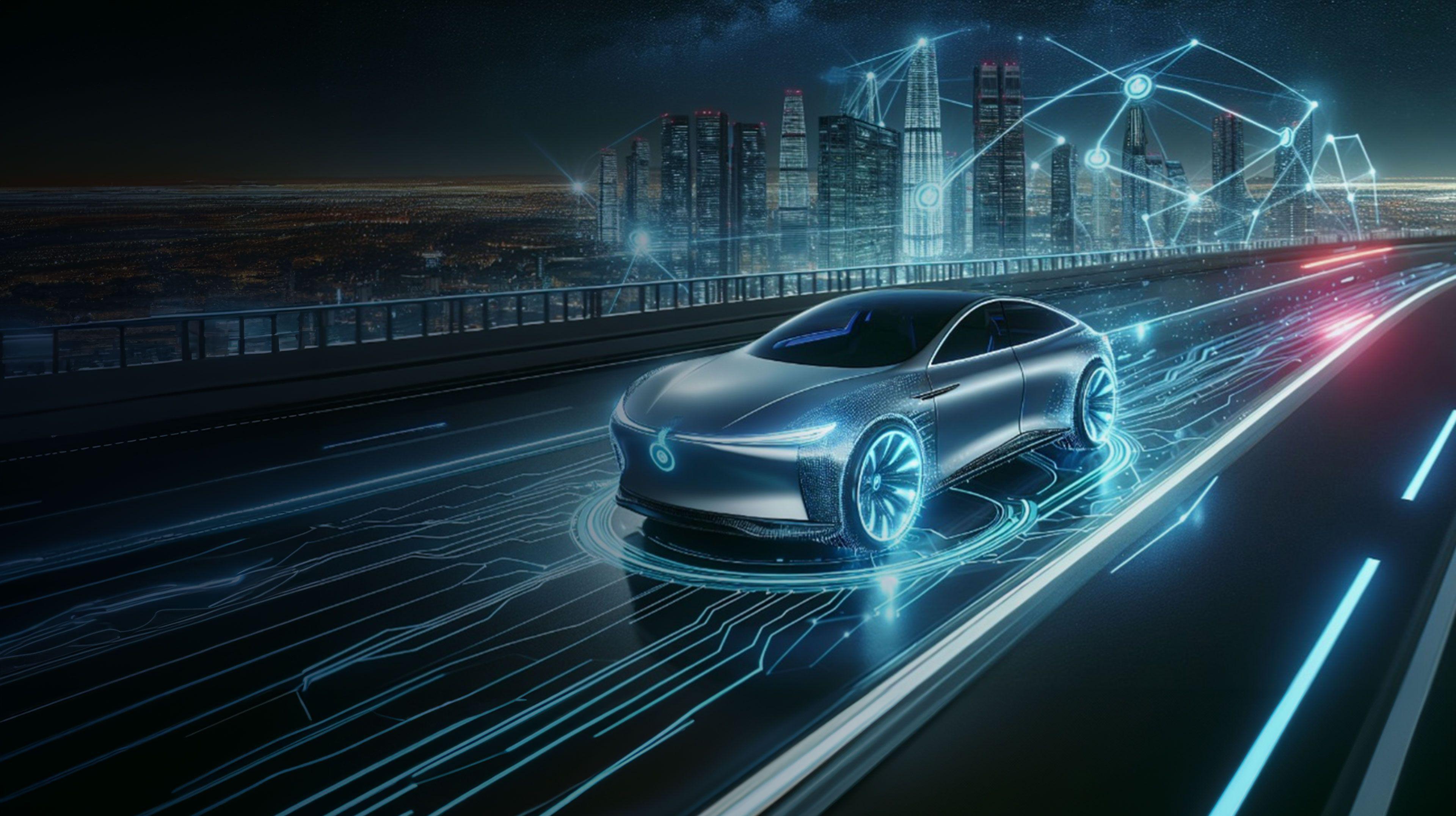
The role of AI in smart car development
- AI is revolutionizing the automotive industry by enhancing both driving experiences and safety protocols. From personalized voice assistants to advanced driver assistance systems, AI technologies are reshaping the future of smart cars;
- Analyzing driver behaviour using AI algorithms contributes to increased road safety and improved driving habits. AI-powered safety features like autonomous emergency braking and lane departure warning systems mitigate accidents and enhance road safety.
We are slowly getting used to artificial intelligence appearing in our everyday lives and can increasingly be found in cars - either under the hood or in the cabin. The role of artificial intelligence in the automotive industry is extremely important because it is already being discovered how to use it to improve safety protocols, personalize the driver's experience and is crucial for the development of self-driving technology. The article will briefly explore AI technology and its impact on the future of innovative solutions in the automotive industry.
Enhancing the driving experience with AI
Before we move on to what is probably the most important topic related to AI and smart cars, i.e. safety, it is worth mentioning how the technology makes drivers' time more enjoyable. It's about a smart voice assistant technology.
Thanks to the integration of artificial intelligence-based voice assistants in cars and the use of artificial intelligence algorithms to monitor and adapt driver behaviour, vehicles are becoming more and more personalized and responsive to the driver's needs.

Analysing driver behaviour
The understanding of human behaviour while driving is increasingly being developed using machine learning algorithms. Although every act of monitoring has negative connotations, in connected cars the analysis of driver behaviour can contribute to a significant increase in road safety. This is a necessary procedure – WHO presented data showing that by 2030 the fifth cause of death in the world will be death in a road accident. The main cause of accidents is and is expected to be human behaviour such as reckless driving (fast driving, driving under the influence of alcohol or drugs), fatigue, anger and carelessness.
Thanks to AI technologies, it is possible to track and then analyse the driver's facial expression. This allows for the analysis of patterns in how a driver behaves in stressful situations and how he reacts to them, and how he drives when he is tired or drowsy. According to research, there is a high probability that an aggressive and reckless driver may change driving style if he/she knows and feels that he/she is being watched. Of course, we are talking about solutions (e.g. inertial measurement units - IMUs) that are not standard and are rather implemented in more expensive cars.
This in-depth analysis of driver behaviour not only provides insights into driving habits but also offers feedback and real-time alerts to encourage better, safer, and more eco-friendly driving practices. It is also worth mentioning that behaviour analysis can also be directed towards pedestrians, which could contribute to the creation of the better alarm system in cars like ADAS.
Smart Voice Assistants
Modern vehicles are rapidly incorporating smart voice assistants as an integral part. These voice assistants, powered by AI, enhance the driving experience by offering hands-free control of functions such as phone calls, navigation, entertainment (for example setting music, audiobooks) or scheduling vehicle services.
However, despite the high adoption rate, car voice assistants face challenges such as accurate speech recognition in the noisy environment of a moving vehicle and difficulties in understanding different accents and slang. As AI technology continues to evolve, natural language processing advancements are progressively addressing these challenges, paving the way for even more advanced and intuitive voice assistants in the future.
Vehicle safety with AI
Artificial Intelligence is at the heart of a silent revolution in vehicle safety. It is the driving force behind advanced driver assistance systems, autonomous emergency braking, and lane departure warning systems that are reshaping the way we perceive vehicle safety. The growing involvement of AI in vehicle safety signifies considerable technological advancements and demonstrates the dedication of automobile manufacturers towards consumer safety.
AI in the automotive industry is not just limited to ensuring safety — it also aims to enhance overall driving experiences. Leveraging real-time data analysis and decision-making capabilities, AI is steadily transforming the automotive sector, making our roads safer and our journeys more enjoyable.

Advanced driver assistance systems
We have already written about ADAS in the context of UX design in in-car systems, but how is this technology connected with AI? First, let's list what sensor technologies are included in ADAS:
- cameras;
- GPS/GNSS;
- radar;
- sonar;
- light detection and radar (LIDAR).
ADAS functionalities include a number of passive and active systems. Passive systems warn the driver with sounds or lights, while active systems independently perform actions such as braking in emergency situations. Thanks to AI, or more precisely the sub-technology that is Machine Learning, it is possible to avoid such situations as pedestrian and object detection, thus improving understanding of the scene and ensuring safe navigation. The ML algorithm enables computers, based on data and patterns, to learn and extract important insights about potential dangers that a driver may encounter.
Autonomous Emergency Braking systems
Another key safety feature that uses artificial intelligence is autonomous emergency braking (AEB) systems. These systems combine sensor data from radar, cameras and lidar to detect potential head-on collisions. The system assesses such risks by measuring the distance to an object in front of it and calculating the relative speed of both vehicles. If the driver does not react in time, AEBS will automatically apply emergency brakes to avoid or mitigate an imminent collision.

Lane Departure Warning Systems
Another technology that ensures safety and is integrated with AI is the LDW systems – a system that warns drivers if they have crossed the lines on freeways and arterial roads. It uses artificial intelligence combined with sensor networks and computer vision to effectively reduce road accidents and increase road safety.
Such systems use algorithms (e.g. CNN, BING or PCANet) to detect and monitor road markings. LDWS provides reliable and precise lane tracking and departure warnings, adapting to a variety of conditions such as different weather conditions and times of day.
Impact of AI on car manufacturing processes
Artificial Intelligence is not only transforming car functionality, but also revolutionizing car production processes. From optimizing production processes and quality control to improving supply chains, artificial intelligence is changing the game in the automotive manufacturing sector.
The integration of Artificial Intelligence (AI) in manufacturing processes has brought about a significant transformation in the industry. By leveraging AI technologies such as machine learning and predictive analytics, manufacturers are able to optimize production processes, enhance quality control, and streamline operations. AI-powered systems can analyse vast amounts of data in real-time, enabling proactive maintenance, predictive modelling, and efficient resource allocation. This not only improves overall operational efficiency but also reduces downtime, minimizes waste, and enhances product quality. The implementation of AI in manufacturing is paving the way for smart factories that are agile, adaptive, and responsive to changing market demands.
Influence of AI on supply chain
Influence of AI is not limited to vehicle operation and manufacturing, it extends to supply chain management as well. By predicting automobile demand, managing complex supply networks, and optimizing inventory levels, AI is revolutionizing supply chain management in the automotive industry.
AI is transforming supply chain operations by enabling predictive analytics, demand forecasting and real-time decision-making, optimizing inventory levels, streamlining logistics processes - and overall increasing supply chain efficiency. Everything is done using algorithms that allow you to analyse huge amounts of data to identify patterns and trends. This, in turn, allows companies to achieve greater accuracy in demand planning, shorten lead times and reduce risks and errors.

Future of AI in automotive
The above article showed what the automotive industry and its immersion with AI technologies look like. It is difficult to predict what the future will be like, but one thing is certain - the future belongs to algorithms, data analysis, and machine learning. All this to improve the driver's experience, including: autonomous driving technology and electric cars, and optimize production in the automotive industry.
Summary
Artificial Intelligence (AI) is revolutionizing the automotive industry, enhancing both driving experiences and safety protocols. From personalized voice assistants to advanced driver assistance systems, AI technologies are reshaping the future of smart cars. By analyzing driver behaviour, improving safety features, and optimizing manufacturing processes, AI ensures a safer, more efficient, and personalized driving experience. As the industry evolves, AI-driven innovations promise to transform car functionality, production processes, and supply chain management, paving the way for a future of autonomous driving and electric vehicles.
Frequently Asked Questions (FAQ)
How is AI transforming the automotive industry?
AI is used in the automotive industry to improve supply chain management, provide predictive analytics, and develop driver assist programs, autonomous driving, and driver monitoring technologies. These technologies using machine learning algorithms allow you to obtain useful data that can be used to increase road safety.
What is the future of AI cars?
The future of AI cars holds the promise of fully autonomous vehicles, predictive maintenance, and advanced safety features, offering a personalized driving experience tailored to individual preferences. It is predicted that fully autonomous cars will become a common sight on the roads within the next decade, driven by advancements in machine learning and deep learning algorithms.
How does AI enhance vehicle safety?
AI enhances vehicle safety by using Advanced Driver Assistance Systems, Autonomous Emergency Braking, and Lane Departure Warning Systems to reduce accidents and improve road safety.
How is AI used in self-driving cars?
AI is used in self-driving cars through machine learning and computer vision technologies, which enable the vehicles to interpret their surroundings and make decisions, allowing them to operate without human intervention.
MakoLab. Connecting the skies and Earth
References
- John Cunningham, How AI Can Improve The Driver Experience, Forbes
- WHO, Road traffic injuries
- Ilias Atmane, Kamal Hirech, Mohammed Karrouchi, Kamal Kassmi, Abdelhafid Messaoudi, Mustapha Melhaoui, Ismail Nasri, Mohammed Rhiat, Driving behavior assessment: A practical study and technique for detecting a driver's condition and driving style, Transportation Engineering, Volume 14, December 2023
- Jeffrey S. Hickman, E. Scott Geller, Self-Management to Increase Safe Driving Among Short-Haul Truck Drivers, Journal of Organizational Behavior Management, Volume 23, 2005
- Nikunj Dalmia, Market leadership stays with PSUs; stay invested as the best is yet to come, The Economic Times
- Olivier Plante, 5 major flaws of Voice Assistant technology in 2022, Fleksy
- Amir Hever, How AI Is Helping To Improve Transportation Safety On A Global Scale, Forbes
- Dorlecontrols, Machine Learning And Advanced Driver Assistance Systems (ADAS): Revolutionizing Road Safety, Medium
- Wikipedia, Lane departure warning system
- Wikipedia, Automated emergency braking system
- Touqeer Ahmad, George Bebis, Ebrahim Emami, David Ilstrup, Symbolic Road Marking Recognition Using Convolutional Neural Networks
- Tairui Chen, Zhilu Chen, Quan Shi, Xinming Huang, Road marking detection and classification using machine learning algorithms, IEEE Xplore
- Tai Yoon Chai, Ismail Nizam, Impact of artificial intelligence in automotive industries transformation

Katarzyna Warmuz
Content Marketing Specialist




